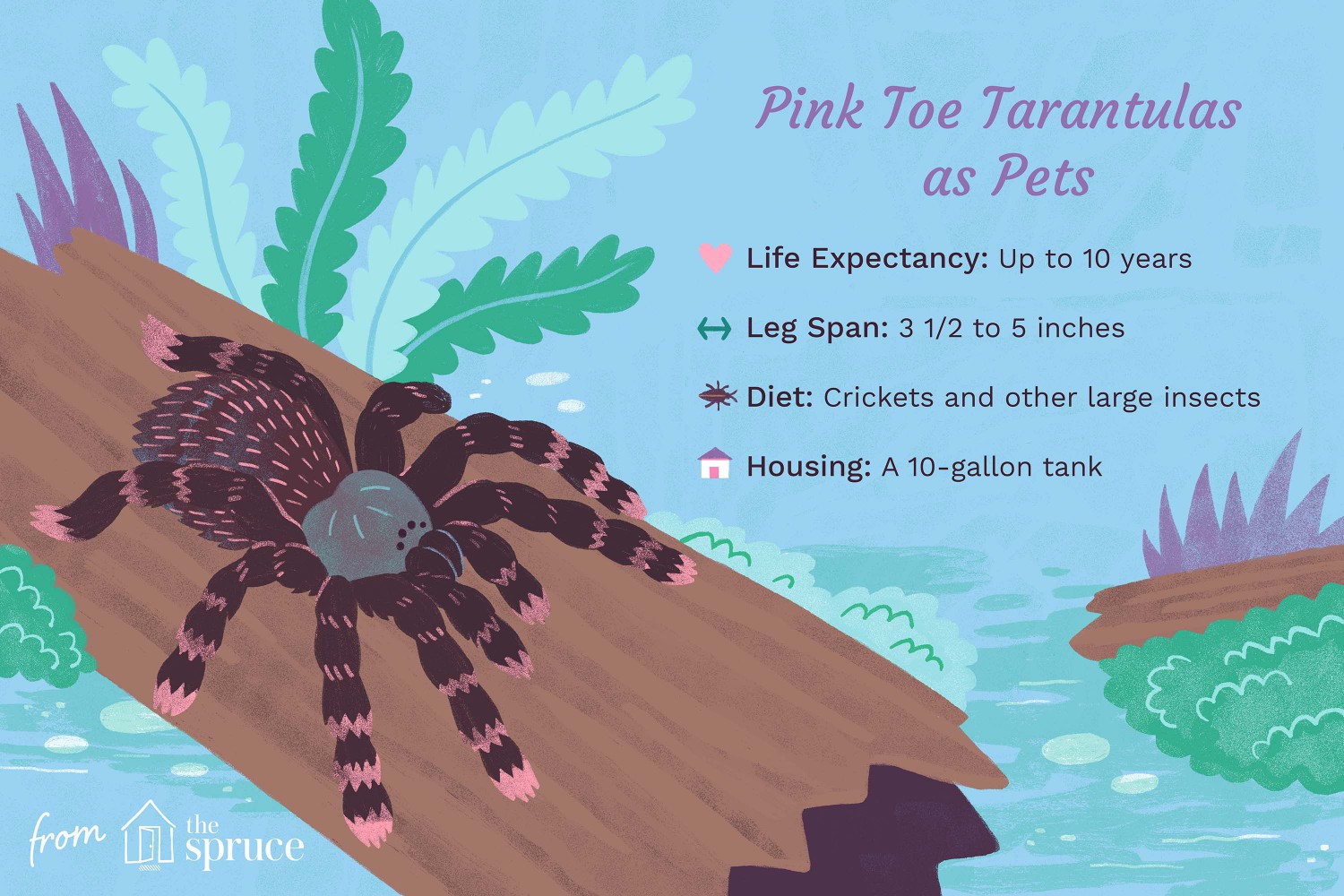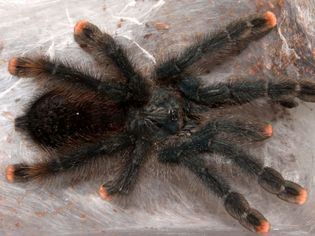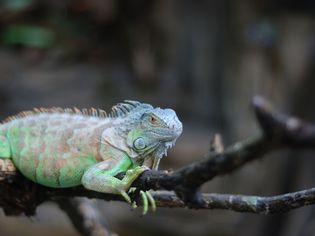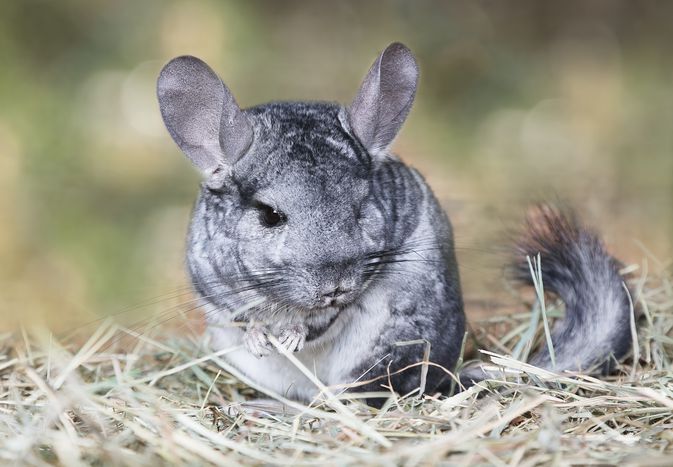The pink toe tarantula, sometimes referred to as the South American pinktoe or the Guyana pinktoe, got their name from their pinkish-orange toes that sprout off of furry black legs. Their quiet demeanor, minimal space requirements, and relative ease of care can make them a great option for an exotic pet.
Native to South America, these fast-moving, agile creatures live in trees where they spin elaborate webs. As pets, they require housing that mimics their natural habitat, along with live prey. And though some people do handle their spiders, these animals are more for your enjoyment as you watch their interesting behaviors.
Learn more about pink toe tarantulas and how to properly care for them.
Species Overview
Common Names: Pink toe tarantula, South American pinktoe, Guyana pinktoe
Scientific Name: Avicularia avicularia
Adult Size: Leg span of 3.5 to 5 inches
Lifespan: 10 to 12 years (female); 3 to 4 years (male)
Pink Toe Tarantula Behavior and Temperament
As pets, pink toe tarantulas are quiet animals and will spend much of their time sitting in a restful state in their enclosure. In general, the most activity you'll see from them is when they're hunting their live prey, such as crickets, at feeding time. Expect to spend a few hours each week on feedings and keeping the enclosure clean.
These tarantulas can share an enclosure with others of the same species, though they don't necessarily need the company. Solitary housing removes the threat of cannibalism, a situation that can occur when the spiders are living in tight quarters or are otherwise stressed. Likewise, it's best to keep your tarantula away from any other pets in the household, as they could injure one another.
Handling a Pink Toe Tarantula
Pink toe tarantulas are not aggressive. In addition to being quiet, they can be shy. However, a pink toe tarantula might bite if they feel threatened, and can throw hairs from their body as a defense mechanism.
While some owners prefer not to handle their spiders, others enjoy it. And if you do it calmly and gently, the spider typically won't mind sitting on your hand or arm.
Also, pink toe tarantulas tend to be very fast and skittish, so they can be difficult to handle and might try to jump out of your hands if they're startled. This is why it's important to handle your spider while sitting on the ground—if they accidentally fall, they will be less likely to get hurt. A fall from just a few feet can cause serious injury or even be fatal to a spider.
Warning
The tarantula does have toxic venom that typically causes a local reaction similar to a bee sting. However, some people who are allergic to the venom can have more serious reactions and should seek immediate medical care.
8 Tips for Keeping Tarantulas as Pets
Size Information
The pink toe tarantula stretches around 3.5 to 5 inches across. The females are slightly larger than males.
Housing
An enclosure with some height is necessary for these tree-dwelling spiders. A 10-gallon tank with a secure side opening can work well. Because pink toe tarantulas spin their webs up high, the side opening prevents damage to the web any time you need to open the enclosure for feedings or cleaning.
Pink toes can tolerate a wide temperature range from around 60 to 80 F. Ideally, the enclosure temperature should be between 78 and 82 F. Under-tank heaters and reptile heat lights can provide the correct amount of ambient heat. Monitor the temperature with a thermometer in the tank.
In the wild, pink toes live in humid climates, so it's important to maintain a humidity level between 65% and 75% in your spider's enclosure. In fact, keeping the humidity level high can be one of the most difficult parts of having a pink toe tarantula.
To raise the humidity, you can add a sponge soaked in water to the bottom of the enclosure, as well as mist the enclosure every two to three days with clean water in a spray bottle. Not only will this provide humidity for your pet, but it also will benefit any live plants in the enclosure. Monitor the humidity level with a hygrometer.
To keep the enclosure clean, remove any uneaten prey after 24 hours. Also, monitor for mold growth, which can occur in a humid environment. Immediately remove any portions of the peat moss or soil bedding that start to grow mold. And expect to do a full change of the bedding roughly every four to six months.
Specific Substrate Needs
The tank should contain 2 to 3 inches of peat moss or soil (free of fertilizers and pesticides) at the bottom, as well as small logs, branches, and live plants for climbing. Peruse pet stores for reptile and bird accessories—especially natural branches—as these often work well for pet tarantulas to climb on.
What Do Pink Toe Tarantulas Eat & Drink?
Spiders love crickets and other insects, making pet ownership a two-part project because you'll need to keep and feed live crickets alongside your arachnid (unless you purchase them regularly). The crickets should be gut-loaded (fed nutritious foods) prior to giving them to your spider.
Dropping live prey into the bottom of the enclosure should whet your spider's appetite, whereas the spider might ignore dead insects.
Adult pink toes generally eat a few crickets every three to 10 days, and young spiders need similar nourishment every two to five days. In addition to crickets, they can be fed other insects, such as grasshoppers, moths, and cockroaches.
You also can give an adult tarantula the occasional pinky mouse, small tree frog, or small lizard as a treat. Be sure to consult your veterinarian for the appropriate amount and variety to feed your particular animal.
It's recommended to feed a tarantula in the evening when they're more active and ready to eat. Leave the prey in the enclosure overnight, but be sure to remove anything that is uneaten within 24 hours. Prey left in the enclosure that your tarantula doesn't want can actually stress the spider.
Finally, your tarantula's habitat must always have a clean water source. Place a few small, shallow water bowls throughout the enclosure, and wash and refill them daily.

The Spruce / Kaley McKean
Common Health Problems
Tarantulas are generally hardy animals that don't face many health problems in captivity. But you still should monitor for any changes in behavior, such as lethargy, loss of appetite, or pacing in the enclosure. These can indicate a potential health issue, and you should consult a veterinarian who specializes in tarantulas as soon as possible.
Some owners mistake the spider's molting cycle for sickness. Molting takes place when a spider sheds their exoskeleton to form a new one. Before a molt, a spider might lose their appetite and seem a little sluggish and dull. Many spiders molt while lying on their backs with their legs curled up, which can alarm owners who aren't familiar with the process.
The actual molt only takes a few hours, but then the new exoskeleton needs time to harden and become protective. The whole process is typically over in a few weeks, and your spider should resume normal behavior. If they haven't, or if the molt seems to be more difficult or taking longer than normal, consult your veterinarian.
Exercise
Just like with any animal, physical activity is essential for a tarantula to help prevent obesity and other diseases. However, tarantulas don’t need an excessive amount of exercise. As long as you provide them with a large enough enclosure, they should get the activity they require.
Grooming
Pink toe tarantulas don’t require any special grooming. Molting is the main way they "groom" themselves. Ensuring that the tank is at the proper temperature and humidity can help the spider go through a successful molt. Also, make sure there is no live prey in the tank during a molt, as they can damage the soft, vulnerable new exoskeleton.
Upkeep Costs
The primary monthly cost for your tarantula will be their diet, which ranges between $5 and $10 on average—or potentially cheaper if you raise your own crickets instead of purchasing them at a pet store.
Other than that, you might need to spend roughly $10 to $20 to refresh the substrate periodically. And you should budget for an annual veterinary checkup, as well as emergency medical care.
Pros & Cons of Keeping a Pink Toe Tarantula as a Pet
Pink toe tarantulas are low-maintenance and interesting pets to keep. They also require minimal space, and they are quiet. However, they’re not a cuddly pet. And they’re not incredibly active for those who want a lot of excitement from a pet.
Similar Spiders to the Pink Toe Tarantula
If you’re interested in pet tarantulas, check out:
- Costa Rican Zebra Tarantula
- Mexican Red-Knee Tarantula
- Desert Blond Tarantula
Otherwise, check out other tarantulas that can be your new pet.
Purchasing or Adopting Your Pink Toe Tarantula
You might not find a pink toe at a typical pet store. Instead, look for a reputable breeder or exotic pet rescue organization. Expect to pay between $20 and $40 on average, though this can vary based on factors such as the animal’s age.
Reproduction/Breeding
A local exotic veterinarian might be able to direct you to a good seller. The main pro to going to a breeder is you’ll likely have a wider selection of young animals. But rescues often don’t charge as high of prices. Both reputable breeders and rescues should be able to give you information on the animal’s history, health, and temperament.
To avoid accidentally becoming a breeder yourself, keep your spider housed individually.
- Do pink toe tarantulas make a good pet for kids?
Pink toe tarantulas can be interesting pets for kids to keep, as long as they remain out of reach of children who don't understand how to handle them. Some children might not be comfortable with feeding live prey as well.
Are pink toe tarantulas hard to take care of?Pink toe tarantulas are fairly low-maintenance pets that require a straightforward feeding and cleaning routine.
Do pink toe tarantulas like to be held?Pink toe tarantulas can sit comfortably on your hands as long as you are gentle and don't jostle them. However, they are not cuddly animals that enjoy human contact.
Related Article

Understanding Feline Diabetes: Symptoms, Diet, and Treatment

Protecting Your Dog from Parasites: Worms, Fleas, and Ticks

Understanding Dog Nutrition: What to Feed Your Canine Companion

Pet Enrichment: Creating a Stimulating Environment for Your Pet

Iguana: Species Profile

Should You Keep a Skunk as a Pet?

Broken Legs in Chinchillas

Diarrhea in Ferrets










Comments on "How to Care for a Pet Pink Toe Tarantula" :